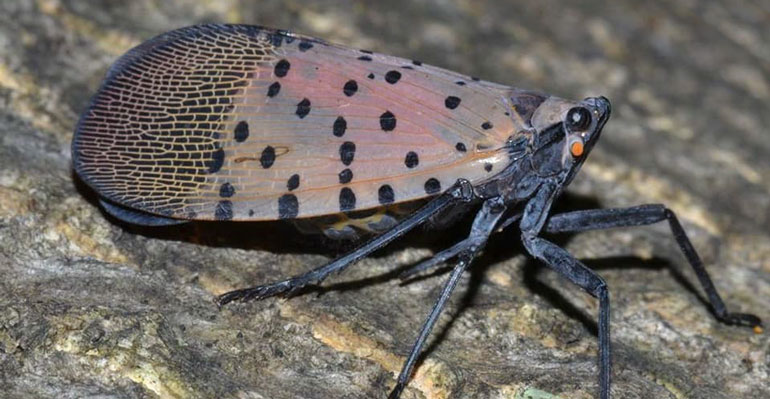October 11, 2019

Identifying potential spotted lanternfly hot spots beyond Pennsylvania’s current 14-county quarantine zone is the focus of a survey being carried out by Penn State Extension.
“We must employ proactive strategies to prevent the spotted lanternfly from gaining a foothold in areas it hasn’t yet reached,” says Dennis Calvin, an entomologist who serves as associate dean and director of special programs in Penn State’s College of Agricultural Sciences. “One way to do that is by identifying and patrolling high-risk areas that might be enticing to this destructive insect.”
Destructive pest
Native to Asia, the spotted lanternfly first was discovered in the U.S. in Berks County, Pa., in 2014. It has since spread throughout southeastern Pennsylvania and has been found in New Jersey, Virginia, Maryland and Delaware. The pest threatens Pennsylvania's grape, tree fruit, hardwood and nursery industries, which collectively are worth about $18 billion to the state's economy.
People can spread the insect when it hops a ride on or attaches its eggs to vehicles or items being transported. Therefore, Calvin says that high-volume transportation corridors and sites of major human activity, such as rest stops, restaurants, shopping centers, distribution centers and gas stations are at increased risk for pest establishment.
In addition, places with high densities of Ailanthus altissima, commonly known as tree of heaven, and similar vegetation such as sumac or black walnut are known to attract the pest.
“The more of these conditions that are met, the greater the likelihood of spotted lanternfly occurrence outside the quarantine zone,” Calvin says.
Tracking through an app
To identify these areas, Extension educators are collecting information about the major interstates, heavily traveled highways and railroad rights-of-way as well as the presence of tree of heaven and other host species in their assigned counties.
They are using a mobile app called iMapInvasives, an online, GIS-based data management system developed by NatureServe, a nonprofit conservation science and technology organization, to document the presence or absence of tree of heaven in these high-risk locations.
The information will be used to create a database and mapping system that will enable officials and scientists to take proactive measures, such as removing host species and conducting patrols of high-risk areas.
It also will also enable officials to react quickly should the pest be sighted beyond the current quarantine zone — Berks, Bucks, Carbon, Chester, Dauphin, Delaware, Lancaster, Lebanon, Lehigh, Monroe, Montgomery, Northampton, Philadelphia and Schuylkill counties.
Extension is working outside the quarantine zone to supplement surveys being conducted by the Pennsylvania Department of Agriculture and USDA.
Heather Leach, spotted lanternfly Extension associate, says that now is the time when spotted lanternflies mate and lay eggs — masses that resemble mud — on a variety of surfaces.
“If you find egg masses on your property from September to April, scrape them off using a plastic card or putty knife, place the masses into a bag or container filled with rubbing alcohol or hand sanitizer, and keep them in the solution permanently,” she says, adding that this is the most effective way to kill eggs, but they also can be smashed or burned.
For more information about how to identify and control spotted lanternfly, how to report an infestation and how to comply with quarantine regulations, visit the Penn State Extension website.
Source: Penn State Extension, which is solely responsible for the information provided and is wholly owned by the source. Informa Business Media and all its subsidiaries are not responsible for any of the content contained in this information asset.
You May Also Like




